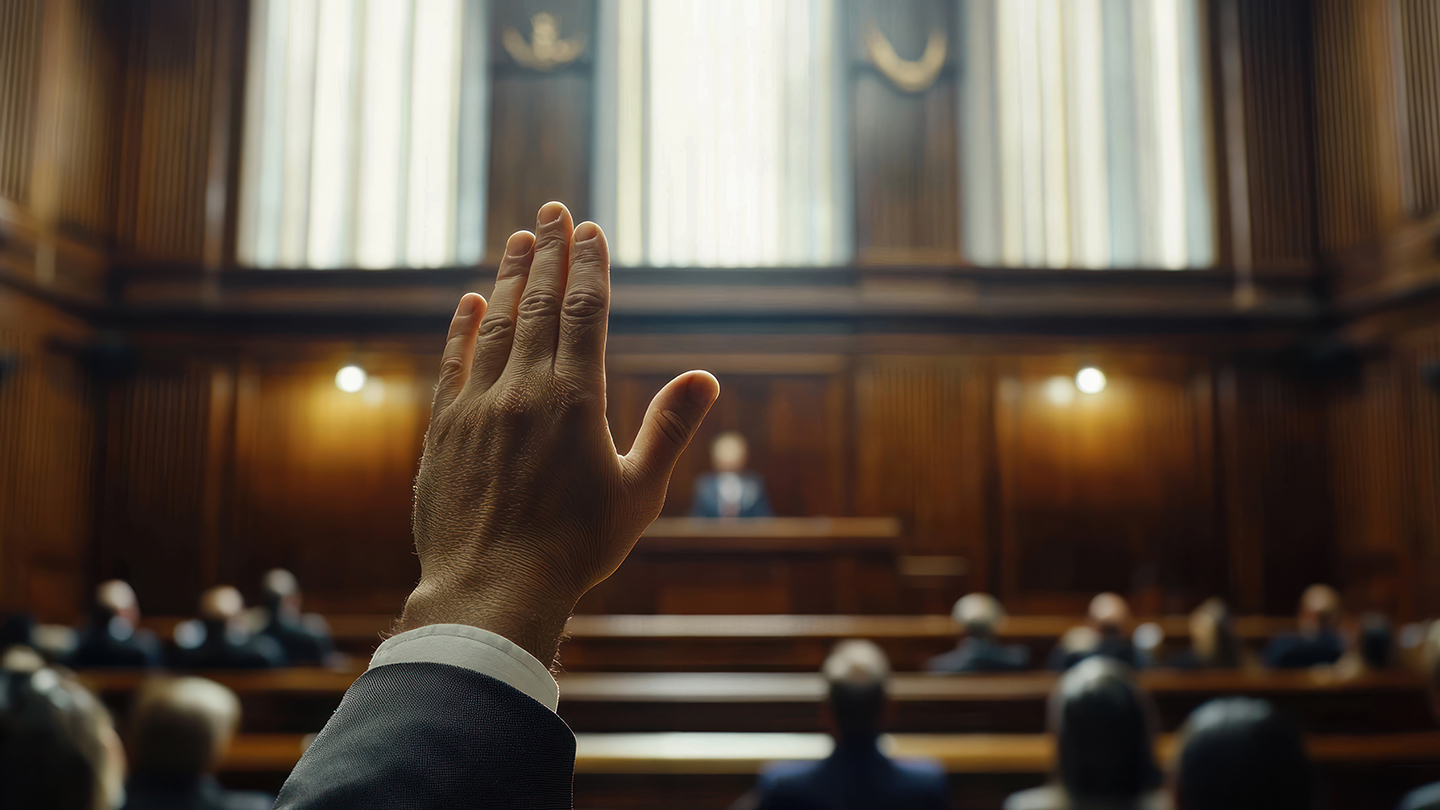The criminal justice system tackles questions of fairness, morality, and protecting rights. Many aspects contribute to such fairness, and one of the best-known is the Brady violation, which stems from the 1963 case of Brady v. Maryland.
A Brady violation happens during a trial when the prosecutor fails to disclose evidence that weakens their case, thereby implicating the defendant without trying to prove guilt.
Origins of the Brady Violation
The origins of the Brady violation concept come from the Supreme Court case of Brady v.Maryland in 1963[1]. In this case, John Brady was convicted of first-degree murder[2]. Later, during his defense, Brady’s legal team discovered that a crucial statement from a co-defendant had not been presented, which could have affected the trial’s outcome
The Supreme Court contended that the trial prosecutor is under an obligation to turn over all favorable evidence without exception. Suppression of crucial evidence cannot be used as grounds for conviction. This led to the development of the Brady violation concept, which has since evolved.
A crucial case that further solidified this framework was Kyles v.Whitley[3]. In this case, the Supreme Court reinforced the importance of prosecutorial disclosure[4] and ruled in favor of a defendant whose conviction had been affected by failure to disclose crucial evidence. This decision emphasized the obligation of trial prosecutors to ensure full transparency in criminal trials.
Legal Requirements of a Brady Violation
To establish a Brady violation in court, three key requirements must be met. These requirements form the foundation for any Brady claim and help courts determine whether a defendant’s due process rights have been violated. Let’s examine each requirement in detail to understand what prosecutors must disclose and what defendants must prove.
1. Favorable Evidence to the Defendant
The prosecution must have withheld favorable evidence that is either
- Exculpatory Evidence – directly supports the innocence of the defendant
- Impeaching – challenges the credibility of the case or the key witness of the prosecution[5].
For instance, if a witness statement or DNA evidence[6] could have exonerated a defendant from wrongdoing, but the prosecution failed to disclose it, that would be Brady material.
2. The Prosecution Withheld the Evidence
The prosecution must have omitted the evidence disclosure to the defense. This occurs either:
- Intentionally: The prosecution deliberately withholds evidence.
- Unintentionally: Evidence is missed or not presented because of carelessness.
Regardless of purpose, the concealment of evidence that may influence the outcome of the trial is a Brady right.
3. The Suppressed Evidence Caused Prejudice
The defendant has to prove that the outcome of the trial would have been different if the evidence had been disclosed.
Here is an example:
If evidence under a key witness’s testimony was forged, and some records proved this, the defendant might argue that had these records been disclosed, they would have changed the verdict.
What is a Brady Motion?
A Brady motion is a motion in which the defense seeks from the court an order forcing the prosecution to release information, the nondisclosure of which relates to the Brady materials. The motion can be made either before the beginning of the trial, contemporaneously with the trial’s progress, or post-conviction.
What Counts as Brady Material?
Brady materials comprise all the evidence that could be beneficial to the accused, inclusive of evidence that may prove the defendant’s innocence and, on the other side, evidence that has the lowest level of incrimination against the accused or casts suspicion on the prosecution’s evidence against the accused.
These can include, but are not limited to, witness statements, photographs, or other evidential materials, as well as documents that can verify the arguments prepared by the defending side in the case.
For example, if a defendant claims he or she did not commit the crime, and there is evidence showing he or she did not, then that evidence will be considered Brady material.
Brady Disclosures: What Happens After a Brady Motion is Granted?
If a Brady motion is granted, the prosecution must disclose all relevant Brady material to the defense. Failing to do so can result in serious legal consequences, such as:
- Conviction reversal: If the withheld evidence is crucial, the court may vacate the conviction.
- New trial orders: If the violation undermined the fairness of the original trial.
- Sanctions against the prosecution: In severe cases, prosecutors may face disciplinary action.
Brady disclosures can occur before, during, or after trial, depending on when the evidence is discovered. Defense counselors must remain vigilant throughout the case to identify possible Brady violations and protect their client’s rights.
The Impact of Brady Violations on Criminal Defense
Brady violations have major consequences for defendants, prosecutors, and the legal system as a whole.
1. Legal Remedies for the Defendant
If a Brady violation is discovered, the defense lawyer can seek legal remedies such as:
- Filing an appeal to challenge the conviction.
- Requesting a retrial if the suppressed evidence was critical.
- Seeking post-conviction relief to overturn wrongfully convicted[7] individuals
2. Prosecutorial Responsibility & Ethical Duties
Prosecutors have an ethical duty[8] to ensure a fair trial by disclosing all Brady material. Failure to do so undermines public trust in the justice system. It can lead to misconduct charges against prosecutors. Plus, it may result in disciplinary actions, including disbarment in extreme cases.
3. Broader Justice System Implications
Brady violations highlight the risks of wrongful convictions, emphasizing the need for:
- Better oversight of prosecutorial practices.
- Stronger accountability measures for evidence disclosure.
- Judicial enforcement of fair trial rights.
A Brady violation involves serious injustice in a case such that the outcomes can be mistakenly changed. Where one or more of your close family members, including you suspect critical evidence is not disclosed, legal representation is promptly needed. An experienced district attorney can check case details for potential Brady violations, file a Brady motion to obtain undisclosed evidence, and advocate for a retrial or appeal if a violation occurs.
Need Legal Guidance?
If you suspect that a Brady violation has impacted your case, contacting a defense attorney at Manshoory Law would be a better option for you.
References
- Brady v. Maryland, 373 U.S. 83 (1963). (n.d.). Justia Law. https://supreme.justia.com/cases/federal/us/373/83/
-
Manshoory, S. (2024, March 7). Difference between 1st, 2nd, and 3rd-Degree murders? Manshoory Law Group, APC. https://manshoorylaw.com/blog/difference-between-1st-2nd-and-3rd-degree-murders/
-
Kyles v. Whitley. (n.d.). https://www1.law.umkc.edu/suni/wrongful_convictions/kyles.htm
-
Casemine. (1995, April 20). Casemine. https://www.casemine.com. https://www.casemine.com/commentary/us/kyles-v.-whitley:-reinforcing-prosecutorial-disclosure-obligations-under-brady/view
-
Manshoory, S. (2020, December 2). What are the Rules Regarding Witness Selection in a California Criminal Case? Manshoory Law Group, APC. https://manshoorylaw.com/blog/what-are-the-rules-regarding-witness-selection-in-a-california-criminal-case/
-
Manshoory, S. (2022, September 15). Understanding DNA evidence in criminal cases. Manshoory Law Group, APC. https://manshoorylaw.com/blog/understanding-dna-evidence-in-criminal-cases/
-
Manshoory, S. (2018, March 28). How to defend yourself against false accusations. Manshoory Law Group, APC. https://manshoorylaw.com/blog/defending-against-false-accusations/
-
9-5.000 – issues related to discovery, trials, and other proceedings. (2024, December 10). https://www.justice.gov/jm/jm-9-5000-issues-related-trials-and-other-court-proceedings



